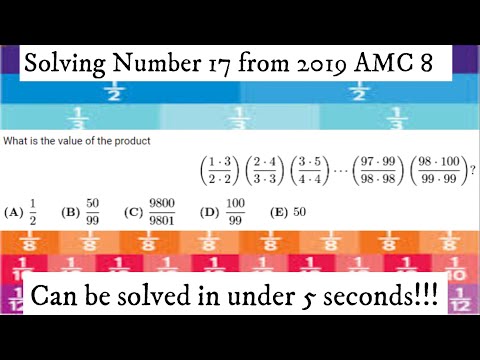触类旁通的全美数学竞赛
发表时间:+-
2023-12-11
最近在辅导几个小孩做数学竞赛题,临时抱佛脚,参看了历代AMC8 的考试题。发现在AMC数学竞赛的考题中,有很多类似的数学题,是可以触类旁通,举一反三的。例如2018年的AMC8数学竞赛中的第二题:

和2006年的AMC8 全美数学竞赛中的第九题,实在就是同一道题:

再看1985年AJHSME全美初中数学竞赛中的第九题,也基本上是大差不差:

再看2019年AMC8全美数学竞赛中的第十七题,简直就是一个送分的傻瓜题:


那么再看第2022年AMC8全美数学竞赛的第八题,是不是简直就弱爆了:

还是在2018年,AMS8全美数学竞赛的第五题:
What is the value of |
和1990年全美初中数学竞赛第十六题,也似曾相识:
还有1993年全美初中生数学竞赛第19题:
|
1996年全美初中数学竞赛第12题:
|
2013年AMC8数学竞赛第三题:
What is the value of
|
2017年AMC8全美数学竞赛的第八题:
| Find the value of the expression |
尤其是令人惊讶的是,2018年AMC8全美数学竞赛的第15题:
In the diagram below, a diameter of each of the two smaller circles is a radius of the larger circle. If the two smaller circles have a combined area of |
竟然是1986年AJHSME全美初中数学竞赛第23题的如假包换,一模一样:
The large circle has diameter |
不但问题一样,答案也一样。正可谓是,三十年后,又是一条好汉!
如此举一反三,大同小异,简单的重复,万变不离其宗。掌握了这些规律,多做一些练习,全美数学竞赛,还有什么难的!

![[asy] size(4cm); filldraw(scale(2)*unitcircle,gray,black); filldraw(shift(-1,0)*unitcircle,white,black); filldraw(shift(1,0)*unitcircle,white,black); [/asy]](https://blog.creaders.net/upfile/image/20231211/1702324052554567.png)
![[asy] pair A=(-2,0), O=origin, C=(2,0); path X=Arc(O,2,0,180), Y=Arc((-1,0),1,180,0), Z=Arc((1,0),1,180,0), M=X..Y..Z..cycle; filldraw(M, black, black); draw(reflect(A,C)*M); draw(A--C, dashed); label(](https://blog.creaders.net/upfile/image/20231211/1702324365673931.png)